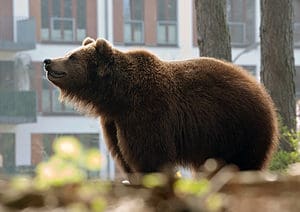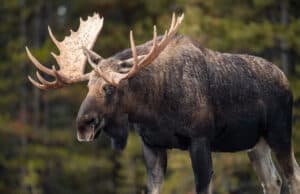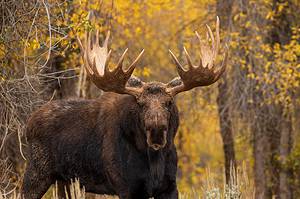Found throughout parts of the northern United States is the mighty moose species, known for their towering antlers and captivating presence. As the vibrant colors of fall spread, creating all-new landscapes from coast to coast, moose also begin their rutting (mating) season. When cooler weather and the winter season commences, bull (male) moose wander more extensively throughout their habitats in search of cow (female) moose to mate with. This makes fall one of the best times to spot moose in their natural habitats!
Additionally, this season offers rare photography opportunities to capture stunning images of moose against beautiful backdrops of yellow, orange, and red leaves. Discover the best places to spot moose in the fall and uncover some awe-inspiring facts as we explore the hidden habitats of moose in the U.S.
How to Have a Safe Moose Encounter
Encountering a moose can be an exhilarating, once-in-a-lifetime experience. Still, it is crucial to understand the potential dangers of a situation like this — especially during the fall mating season. So, before we begin, let’s analyze how to stay safe in a close encounter with a moose this fall season. For background, the autumnal months are when bull moose seek out their mates, making them much more aggressive and territorial. Due to their massive size, moose can be extremely dangerous if they feel threatened or cornered. Because of this, it is essential to give them space and respect their boundaries while you are out in nature. If you come across a moose, maintain a safe distance of at least 50 feet (or more) and back away in the direction you came. Never approach them, and especially avoid loud displays to minimize the chances of you accidentally spooking them.
Moreover, keep in mind how surprisingly fast and agile moose are. You should never attempt to outrun them! If a moose charges you, seek shelter or coverage behind a solid object such as a large tree or, better yet, inside a vehicle. If nothing is nearby, curl into a ball, protect your head, and lie still until the moose retreats. Remember, appreciating moose from a safe distance is the best (and only) way to admire their beauty while ensuring your safety!
10. Superior National Forest, Minnesota

Lake Superior is a famous destination during the fall because of its widespread scenic landscapes and plentiful wildlife spotting opportunities.
©igorkov/iStock / Getty Images Plus via Getty Images
Superior National Forest is located in the Arrowhead region of Minnesota, bordering the north shore of Lake Superior and the Canadian border. Across its 3.9 million acres lies dense forests, clean lakes, iconic megafauna, and various rocky landscapes. This makes the area an ideal habitat for moose, along with other native residents like eagles, deer, gray wolves, Canada lynx, and black bears. Visitors have their pick of outdoor activities, such as canoeing the Boundary Waters wilderness area, hiking through Tettegouche State Park or Bean and Bear Lake Loop, or even camping among the stars in the South Kawishiwi River campground.
More specifically, for those hoping to spot moose this fall, explore Gunflint Trail. This 57-mile paved road goes straight through moose country, making it the perfect addition to your moose-sighting road trip itinerary. Alternatively, check out the Moose Viewing Trail, which offers hikers the greatest chance of spotting moose this fall! This short trail leads to an overlook platform that provides the best view of the area’s wildlife and scenic landscape. To really increase your chances of spotting moose, go during dawn or dusk — a time when they are most active.
9. Moosehead Lake, Maine
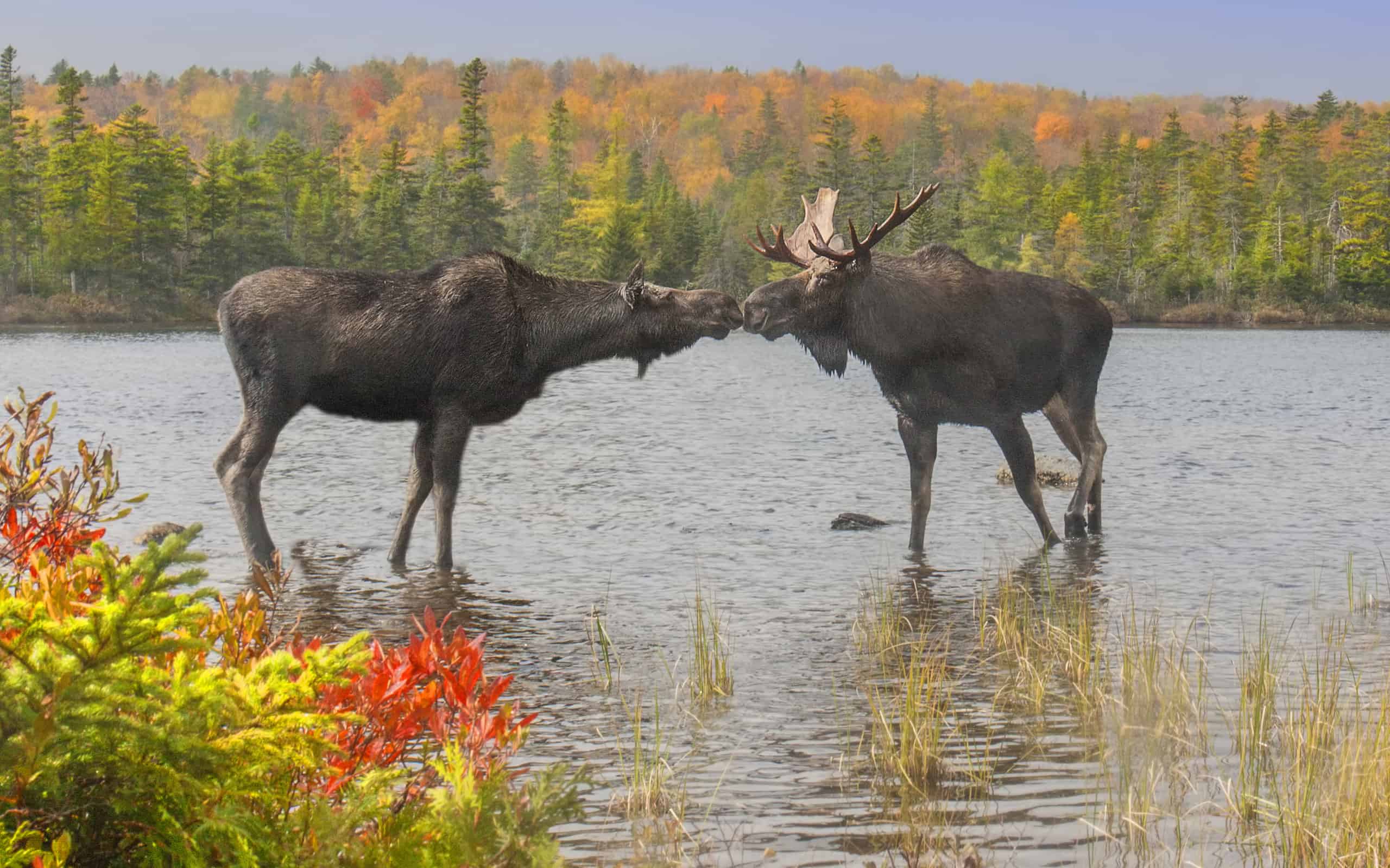
A “moose smooch” occurs when a cow and bull moose touch noses to show their affection.
©RichardSeeley/iStock / Getty Images Plus via Getty Images
Located just three hours north of the bustling city of Portland is Moosehead Lake. It is the largest lake in Maine at 40 miles long and 22 miles wide. It covers almost 75,000 acres, making it the largest mountain lake on the East Coast. Surrounded by forests and mountain ranges, this area is known for its frequent moose sightings. Plus, in the Moosehead Lake area, moose outnumber people 3 to 1, giving tourists an excellent chance of spotting these creatures this fall.
One of the best viewing areas for moose is along the scenic drive from Greenville to Kokadjo. Many people who drive this 20-mile route are fortunate enough to spot moose grazing along the side of the road, allowing them to enjoy the wildlife without even stepping out of their cars! Alternatively, embark on a boat tour or hike along the lake’s shores to increase your chances of spotting these iconic creatures in their natural habitats. Some other great places to spot moose include Lily Bay State Park and Rockwood.
8. North Park, Colorado
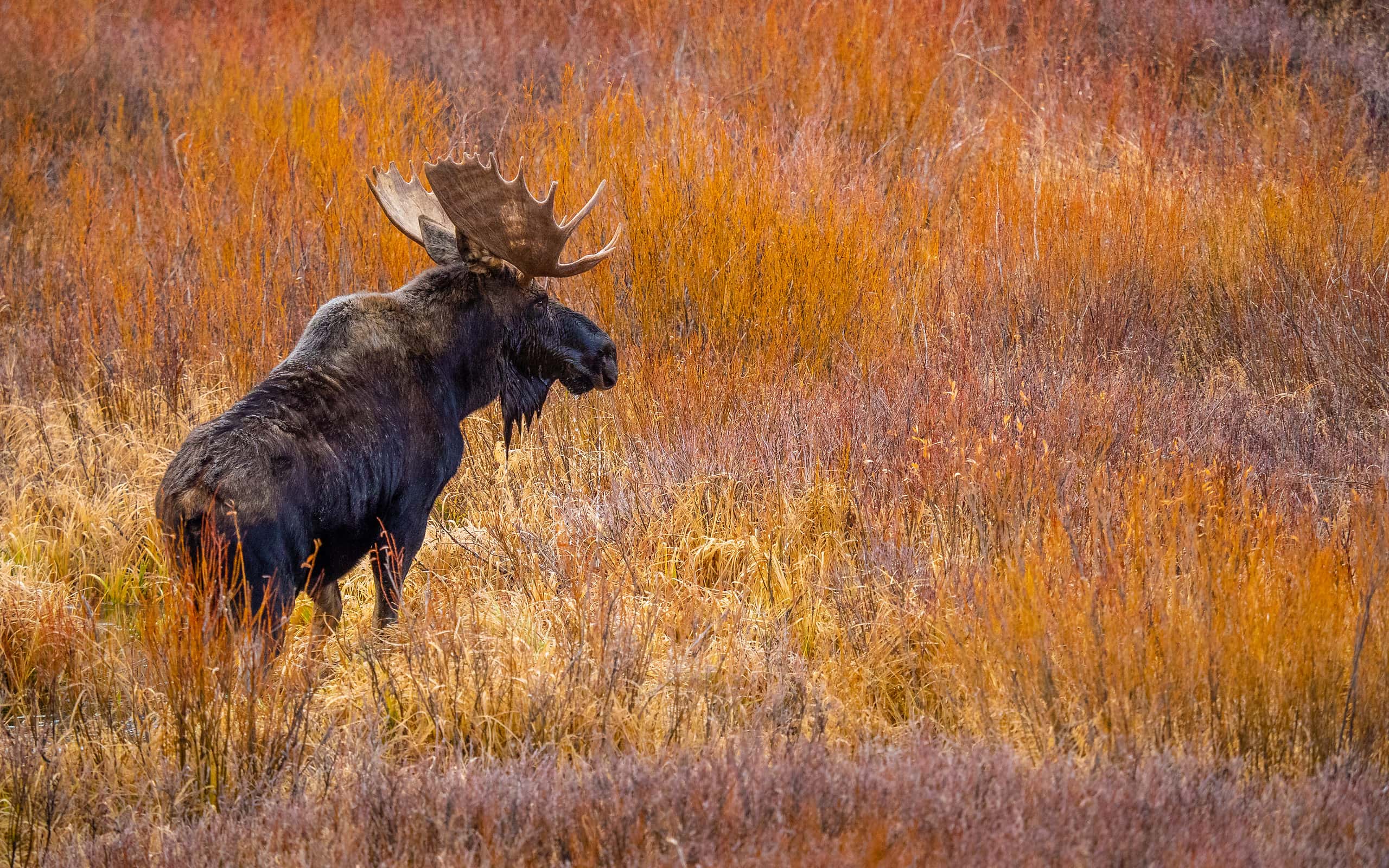
North Park is known as the Moose Viewing Capital of Colorado. It also has a prominent population of elk, deer, and bird species.
©MizC/iStock / Getty Images Plus via Getty Images
One of the best, lesser-known places to spot moose is North Park, Colorado. Surrounded by the Medicine Bow Mountains, the Park Range, and the Never Summer Mountains, this rugged land in the north-central part of the state has one of the best habitats for moose to live in! The valley floor is 7,800 feet and peaks at an elevation of 13,000 feet, It also has a plethora of remote rivers, mountains, and deep forests scattered across over 1,600 miles. While there is a good chance of spotting moose from nearly anywhere in Jackson County, visitors can maximize their chances by exploring the park’s wetlands and meadows in the early morning or at dusk. Alternatively, fall vacationers can head over to the State Forest State Park or the Arapaho National Wildlife Refuge to catch a glimpse of Colorado’s majestic moose.
7. Isle Royale National Park, Michigan

Experts believe the first moose came to Isle Royale National Park in the early 1900s by swimming over from Canada.
©twildlife/ via Getty Images
Isle Royale National Park is situated in the northwest part of Michigan. It is home to Isle Royale — the largest island in Lake Superior. Along with that, this park system also includes 450 smaller islands like Johns Island and Kamloops Island. It is recognized as an International Biosphere Reserve due to its unique ecosystem. The park contains boreal conifer and northern hardwood forests, enabling only a select few animal species to live there. In fact, only 19 mammal species inhabit the area, including wolves, elk, hares, mink, and America’s beloved moose. Though there are an estimated 1,876 moose living on these islands, they are very difficult to spot through the trees. You can reach the island by ferry or kayak. Once there, you can enjoy scenic hikes, visit lighthouses, and, if you’re lucky, spot a moose!
6. Jackson Hole, Wyoming
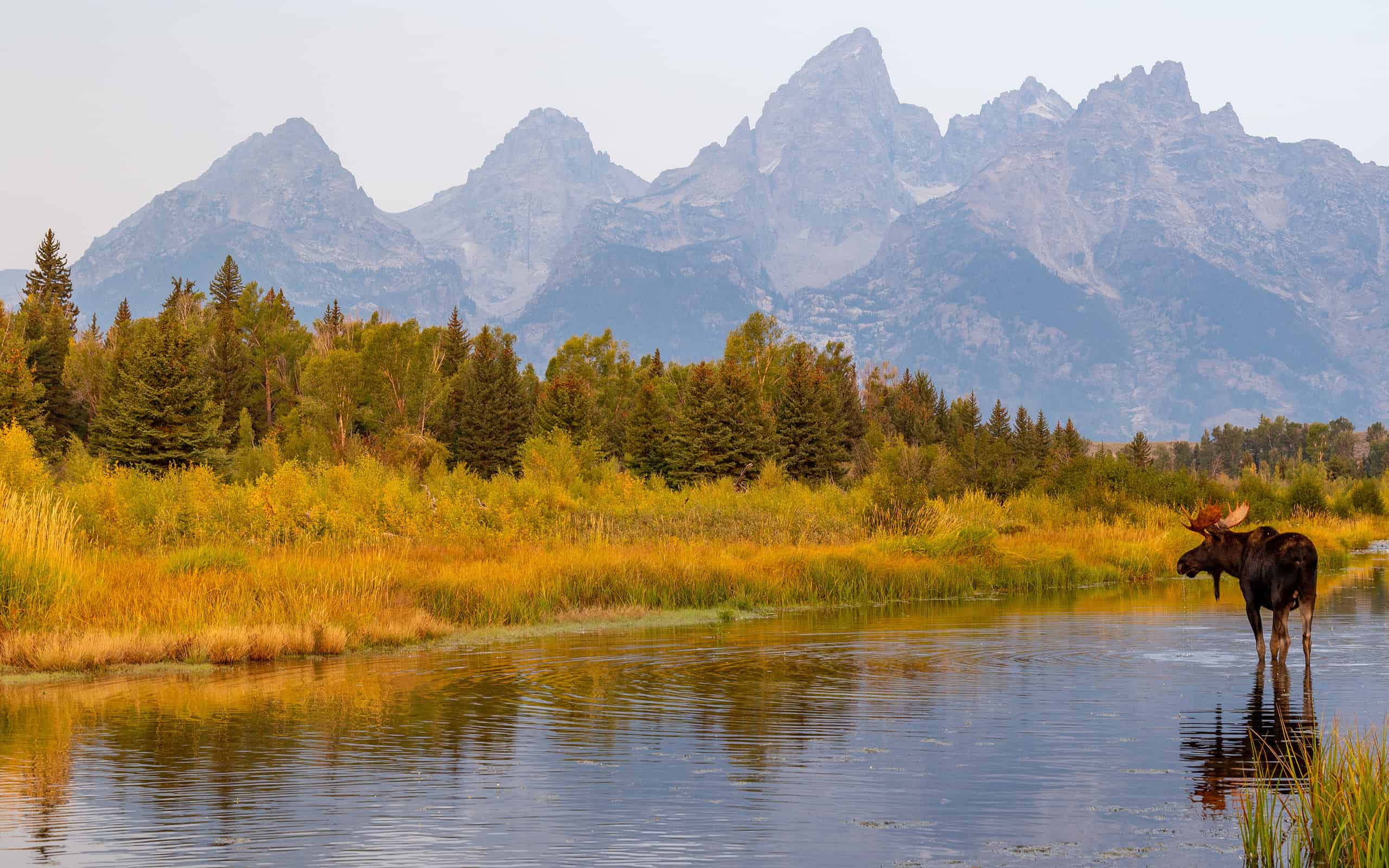
Shiras bull moose enjoy the weather in Jackson Hole, Wyoming.
©christiannafzger/iStock / Getty Images Plus via Getty Images
Jackson Hole is a popular tourist destination best known for its skiing, fishing, rafting, ranches, fine dining, and more! There are many things to do in this area, including visiting Yellowstone National Park and Grand Tetons National Park. For those who prefer educational adventures over nature hikes, the National Museum of Wildlife Art and the Jackson Hole Historic Museum are two other famous attractions in the area. Alternatively, Moose-Wilson Road offers vacationers a simple, scenic tour of the area with lots of wildlife spotting opportunities. Moreover, this 15-mile road runs through forests and marshes, making it a fantastic place for spotting moose this fall. Drive slowly, keep your eyes peeled, and be prepared to encounter these magnificent creatures along the route!
5. Grand Teton National Park, Wyoming

Grand Tetons National Park had 3,885,230 visitors in 2021, which broke its previous record for most recreation visits in the park’s history!
©Mike Casella/iStock / Getty Images Plus via Getty Images
No matter what time of year, Grand Teton National Park is perfectly picturesque. But in the fall, the park is particularly magical with its colorful fall foliage, snow-capped peaks, and abundance of wildlife. Plus, Grand Teton National Park is home to a wide variety of animal species, ranging from grizzly bears and black bears to bison, moose, elk, and pronghorn antelope. Furthermore, this national park is located in the heart of Wyoming, with pristine lakes, alpine terrain, and the youngest mountain range in the Rocky Mountains — the Teton Range.
It is 310,000 acres and is a popular destination for hiking, fishing, mountaineering, and scenic sightseeing. Visitors can explore the park’s wetlands and meadows or opt to traverse the gorgeous mountainous landscapes by following the Jenny Lake Loop trail or Schwabacher Landing trail. While there are many places to spot moose in the Grand Tetons, the best areas to go to seek out moose are around the Oxbow Bend Turnout area between Moran Junction and Jackson Lake Junction. They are also especially apparent around Snake River, the Willow Flats, and Christian Pond.
4. Baxter State Park, Maine
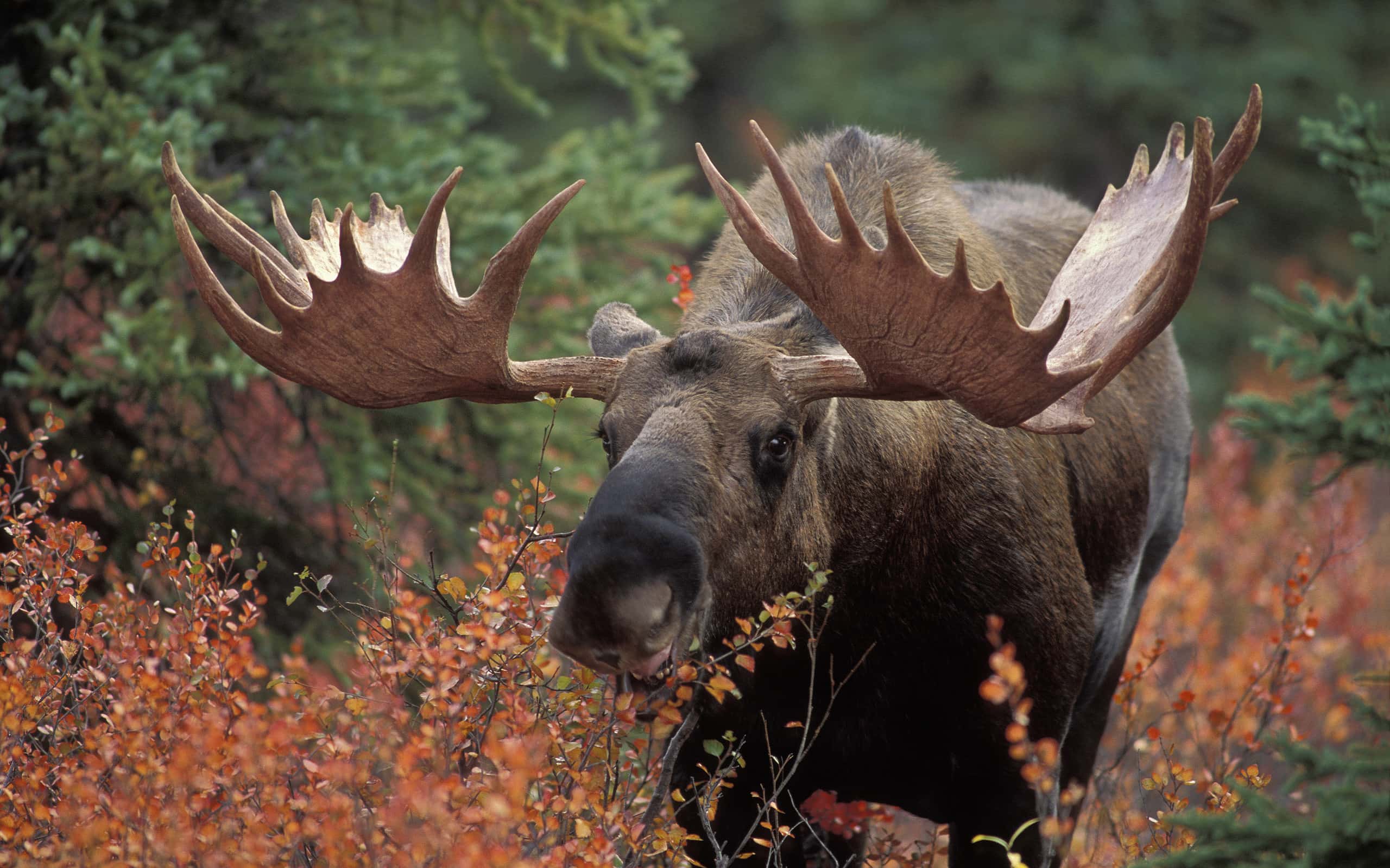
Moose thrive in Baxter State Park, which has over 209,501 acres of permanently preserved wilderness.
©RONSAN4D/iStock / Getty Images Plus via Getty Images
Baxter State Park is a preserved land area in Northeast Piscataquis, Maine. It is nestled in the heart of Maine’s wilderness and offers excellent opportunities to spot moose. During the fall months, this prospect is especially hopeful since they are most active in this area during this time. Plus, the backdrop of vibrant autumn colors allows for the best wildlife photography opportunities. To maximize your chances of spotting moose in this state park, visit Sandy Stream Pond Trail, which is a 1.5-mile round-trip trail that starts at Roaring Brook Campground and connects to Russell Pond Trail. Alternatively, visitors can explore Grassy Pond Trail, Stump Pond, or Hedgehog Mountain, which are all places where moose sightings are common.
3. Acadia National Park, Maine
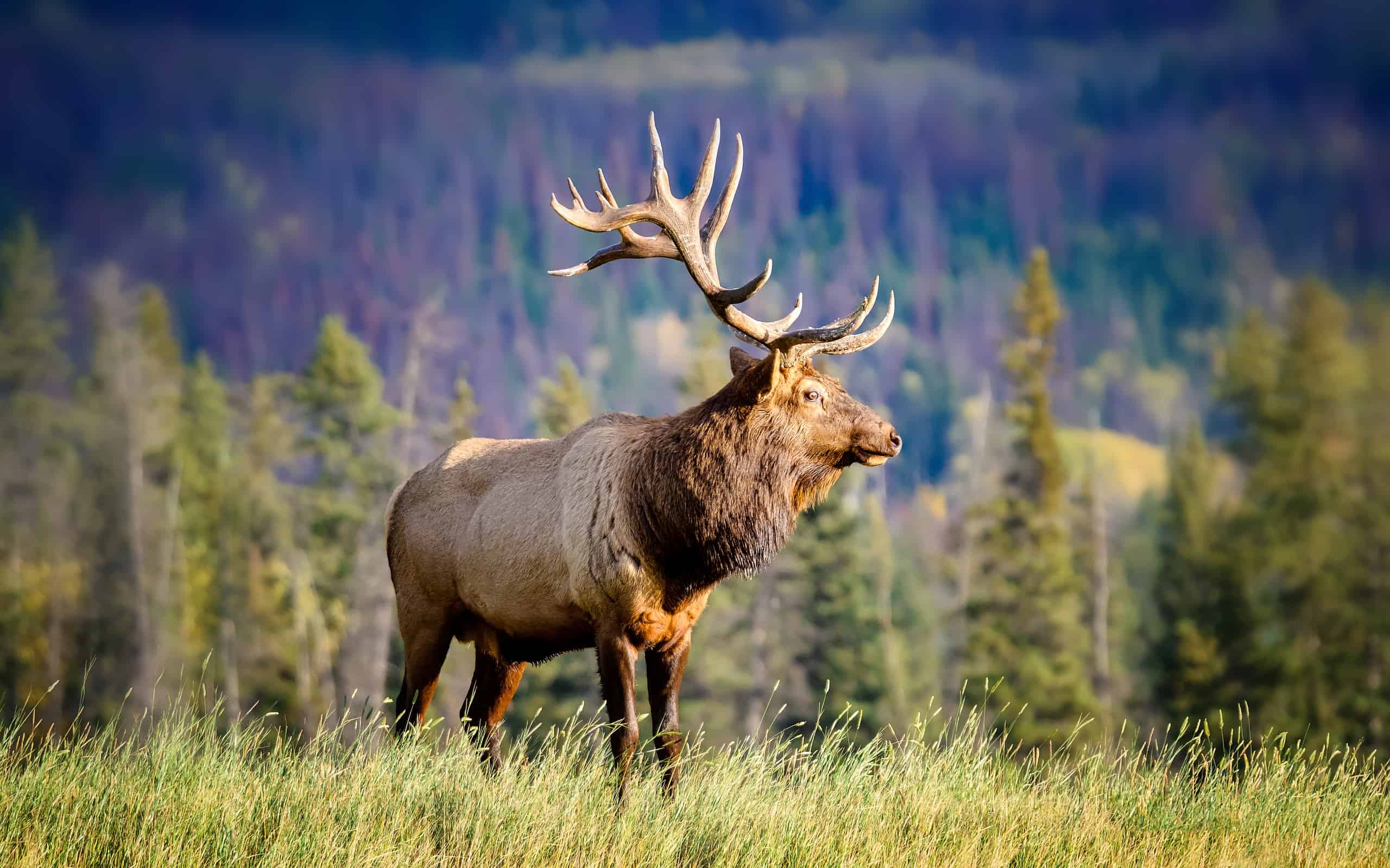
In and around the Maine Highlands region, moose outnumber people three to one. This makes Acadia one of the best places to spot moose on the East Coast!
©Jaroslav Sugarek/iStock / Getty Images Plus via Getty Images
While Acadia National Park is most widely known for its numerous lighthouses and gorgeous hiking trails, it is also one of the best places to spot moose in the fall! Located mainly on Mount Desert Island, Acadia National Park stretches across nearly 50,000 acres of land. This famous park is known for its rugged coastline, beautiful fall foliage, and diverse native wildlife. Above all else, Acadia National Park is a fantastic place to encounter moose. With a population estimated at around 75,000, Maine has the second-largest concentration of moose out of anywhere else in the United States after Alaska. While sightings are rare, there are a few places to keep an eye out for them. Moose in Acadia typically stay further inland, where human activity is less common. Having said that, Katahdin Woods or Waters National Monument gives tourists the highest chance of spotting moose this fall.
2. Rocky Mountain National Park, Wyoming
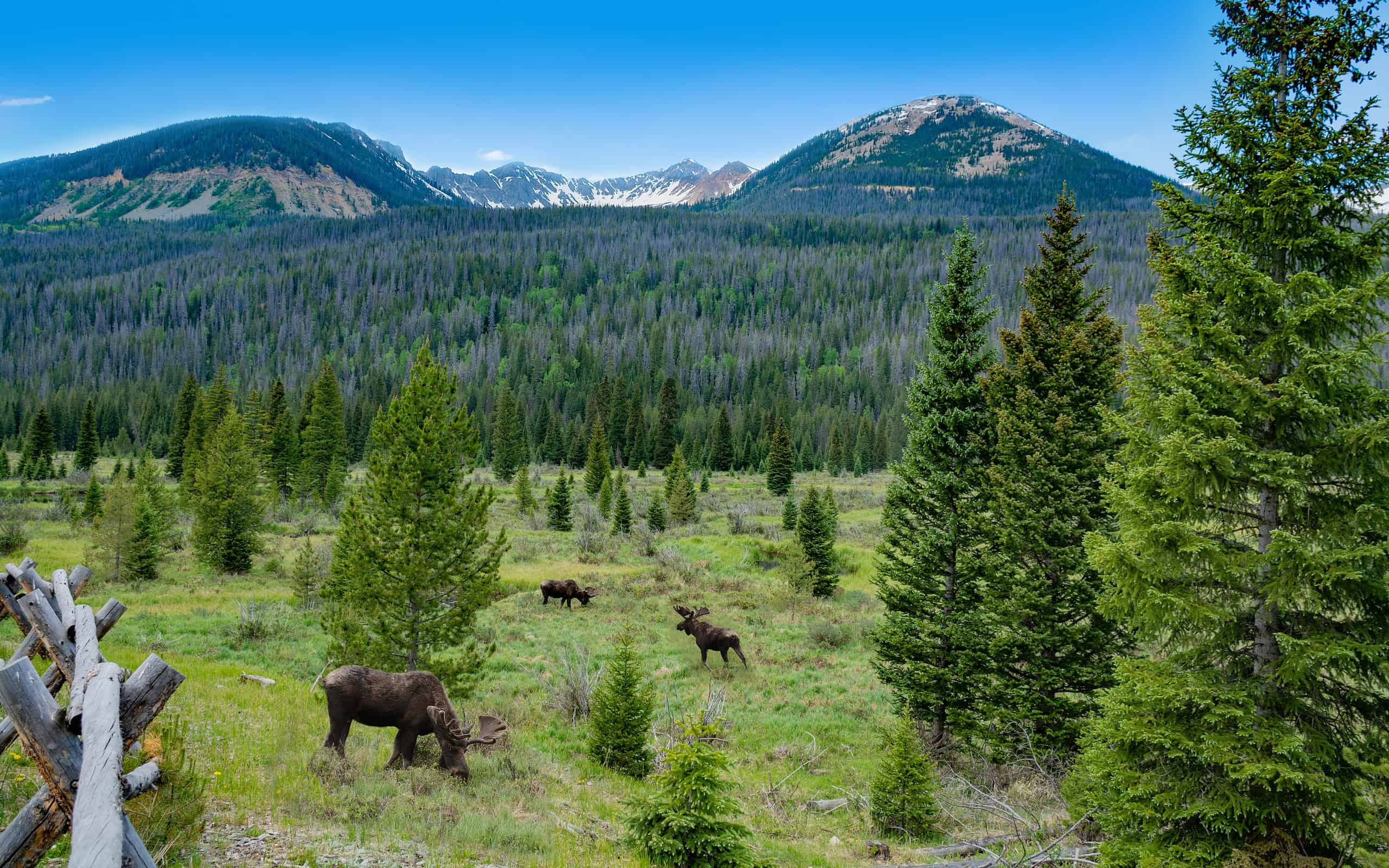
Bull moose graze in the mountains of Rocky Mountain National Park in Estes Park.
©MargaretW/iStock / Getty Images Plus via Getty Images
Home to thriving moose populations, Rocky Mountain National Park offers guests an assortment of things to do. Drive along Trail Ridge Road to enjoy the fall scenery and abundant wildlife sightings, or hike any of the numerous scenic trails located within the park. For those looking for places to spot moose, explore Kawuneeche Valley, East Meadow, Green Mountain Trail, or Onahu Trail. These places, along with the first section of the North Inlet Trail, offer guests the highest chances of spotting moose this fall.
While there are many moose in the area, it helps to know what to look for to find some. To determine if a moose has been in the area recently, you can check for one of three distinct signs. First, bull moose rub their antlers on trees and other hard objects to help shed them. This typically occurs at the end of the fall breeding season, when there is reduced daylight and sparse vegetation — two clear indicators of the oncoming winter season. Secondly, if you can see moose tracks, it is likely that there is one nearby. Typically, moose footprints measure anywhere between 5 and 7 inches long or about the size of your hand. You might also be able to see moose droppings or scat. Although moose droppings resemble elk and deer scat, they are larger, harder, and more oval-shaped.
1. Denali National Park, Alaska

Out of all the U.S. states, Alaska has the largest population of moose.
©Dee Carpenter Photography/iStock / Getty Images Plus via Getty Images
Denali National Park is known for its vast wilderness and picturesque landscapes, such as the Sable Mountain Trail, Polychrome Overlook, and Wonder Lake Campground. The area is filled with abundant wildlife, including bears, caribou, and wolves. The parks’ terrain ranges from Taiga forests, glacial stream floodplains, and woodlands to low-shrub tundra slopes and steep rocky peaks. It is also home to Mount McKinley, the tallest mountain in North America, which is a massive 20,320 feet high at its peak.
Among the many animals that roam the vast landscape of Denali National Park, moose are one of the most common. With an estimated population of between 1,800 and 2,000 moose, this gorgeous Alaskan park is one of the best places to spot moose in the fall. Out of the four moose species in North America, Alaska is home to just one: the Alaska-Yukon moose (Alces alces gigas) variety.
The Alaska-Yukon species is the largest of all North American moose. Adults can grow to be anywhere between 800 pounds (for small females) and 1,600 pounds (for large males). They also stand over 6 feet in height, with antlers reaching up to 72 inches across! Other names for this subspecies are giant moose, tundra moose, or Alaskan moose. They are most commonly found living in low-lying brushlands and bogs, often near rivers or other readily available bodies of fresh water. Because of this, Denali provides one of the best habits for moose to live in. They are most often seen near the park’s north entrance, the Denali Visitor Center, or the Riley Creek Campground. Throughout the fall, moose are frequently spotted between Mile 9 and 13.
Summary of the Top 10 Places to Spot Moose This Fall
| Rank | Location | State |
|---|---|---|
| 1. | Denali National Park | Alaska |
| 2. | Rocky Mountain National Park | Wyoming |
| 3. | Acadia National Park | Maine |
| 4. | Baxter State Park | Maine |
| 5. | Grand Teton National Park | Wyoming |
| 6. | Jackson Hole | Wyoming |
| 7. | Isle Royale National Park | Michigan |
| 8. | North Park | Colorado |
| 9. | Moosehead Lake | Maine |
| 10. | Superior National Forest | Minnesota |
The photo featured at the top of this post is © Olenyok/Shutterstock.com
Thank you for reading! Have some feedback for us? Contact the AZ Animals editorial team.



